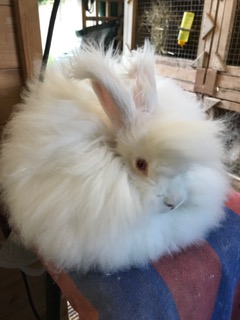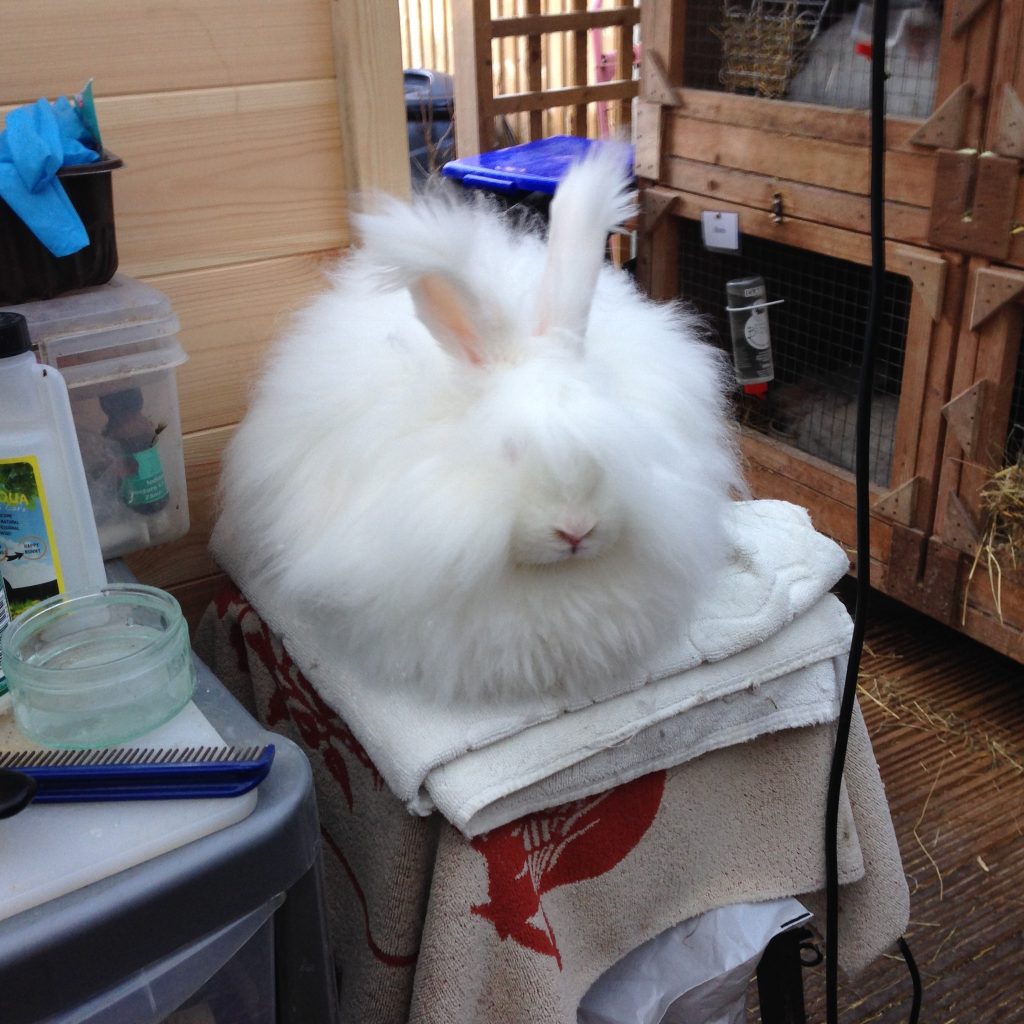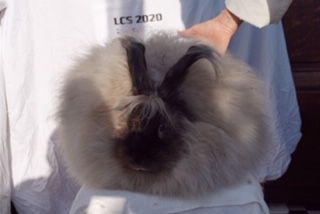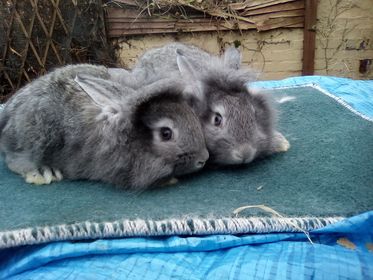
The Onion and the invisible ink, an article by Steve Cook from the 1992 Year book. It’s amazing how often common sense answers to problems are incorrect. Common sense is not always that common or sensible.
For instance, I remember well a rabbit fancier expressing the view that the best way to produce cream angoras would be to cross a gold with a white angora. The theory was similar to that of mixing paints, “white and red paints mixed makes pink”. Of course, a gold crossed with a white angora should yield anything but creams or even even whites or golden kittens. I should imagine that brown-greys or smokes would be a likely outcome (and not particularly good ones at that).

I suppose the above error is understandable given that by saying a rabbit is white does suggest it is coloured white in the same way a smoke is essentially coloured black and a chocolate, brown. (in using the term white I am referring to pink-eyed whites sometimes called albinos, and not blue-eyed nor to “ghosts” of any sort).

Whites are an exception to the rule in that they are not actually coloured at all! The instructions that are carried forward from parents to youngsters to produce whites are instructions that prevent colour from being produced anywhere upon the rabbits body. In the absence of any colour what we actually see as white is the “natural” or “raw” uncoloured state of the fur and the wool. Anyone who doubts this should observe their elders heads and notice how as the hair follicles age so they neglect to produce colour and an increasing number of white hairs appear. “Silver threads amongst the gold”.

The white rabbit (albino) is a coloured rabbit in which the production of colour is prevented. Even the colour in the eyes is absent and the pink colour we see is due to the reflection of light from the back of the eye. A similar effect is sometimes seen in flash photo’s; the so called red-eye effect. Similarly the nails are colourless apart from the pink colour due to blood vessels.

However, whilst the production of any colour is prevented the information required to produce colour is still present. Think of a message written in invisible ink. The message is there but you just can’t see it. So every pink-eyed white has a coloured rabbit “within”. Under the circumstances of breeding white to white, to produce yet more whites, the colours “within” are never revealed. However, once a white is mated to a coloured then the colour “within” can express itself, often with dramatic and disastrous effects. It is very unlikely that the colour “within” any particular white will be known. So, it follows that the use of a white to improve type, texture, etc of coloureds is akin to Russian Roulette. For even if the colour “within” was known it would be supreme folly to assume that the colour even approached its standard. It is for this reason, as well as others that white to coloured matings are regarded as illegitimate (unwise, unnecessary and sometimes just plain stupid).

There are however, two possible exceptions to this. For the colour “within” a white may be any colour except chinchillated (chin) or sable. This appears to be an odd state of affairs until it is realised that the instructions that prevent colour production (albinism) happen to be located at the same place in the rabbit as the instructions, for the production of chin and sable also need to be. In other words the white instructions block these sites to chin, nor sable “within”. As the instructions for the remaining colours are located in different places so the white instructions do not exclude them. This compatibility between white and chin and white and sable explains inpart why such crosses are more legitimate under certain circumstances (see Mrs Pratley’s article “The interbreeding of coloured angoras” in the 1990 NAC yearbook article).

HOWEVER the crossing of chins and sables should not even be contemplated. The chin is an agouti-patterned rabbit and the sable is a self -patterned rabbit. The mating of the two can result in an interchange of the instructions for coat, colour and coat pattern. In subsequent generations some “little strangers” are the “self-chin” which may easily be mistaken for a smoke and the “agouti-patterned Sable” which would have similar markings to a chin but with sable tips and shading. I think the description “pink-chin” is apt. If not very accurate. The combining of the chin and sable instructions may result in brown-eyed chins, which whilst recognised within the breed standards may require care and judgment when bred.
The mating of whites (from sable x sable) to chins: and the mating of whites (chin x Chin) to sables can also lead to the “little strangers” mentioned above.

There is yet another problem associated with the crossing of whites and coloureds and this is what I usually refer to as “tainting”. Imagine that, wisely or otherwise, a white has been crossed into a stud of coloureds. Subsequent selection, over generations, may eliminate the instructions for the “production of white” such that white youngsters do not appear in the litters. However, for some reason the coloured rabbit becomes contaminated in someway by the initial use of white. It is rather like placing a peeled onion and a raw egg next to one another in the fridge; the egg is still an egg but there is no doubt you wouldn’t want to make a cake out of it. Similarly coloureds bred through whites may pick up contamination. This may take several guises from white hairs around the lips to full-blown putty nose. The odd white claw to a completely white claw. The odd white hair on the face and/or ears to what can only be called distinct silvering. The input of white also leads to pale if not white babes to the coats. Also, most, if not all. Angoras show a tendency, particularly with age, to produce white guard hairs (this may be due to long wool or even to clipping, as normal fur breeds suffer very little in this way) However, coloureds that have a white input at some point can and often do exhibit excessive amounts of white hairs even to the extent of what can only be termed “badger back”. Such tainting can and often does take years and years of selection to remove.
It perhaps should be mentioned that tainting can occur when two differently coloured rabbits are mated. Although the “symptons” can differ from those that can occur with white tainting they prove to be as difficult to eradicate. I know at least one instance of tainting that is still causing problems twenty years after the initial mating of two angoras of different colours.
SO in conclusion it is rarely worth using a white to improve the type, coat, and density, etc of a coloured because of the likelihood of introducing unknown quantities which may take years to identify and even longer to eliminate. Hence the well repeated maxim “Breed like to like and quality to quality”, and if IN DOUBT; DON’T.
Needless to say if there are any queries about the above please use the contact form to contact us.